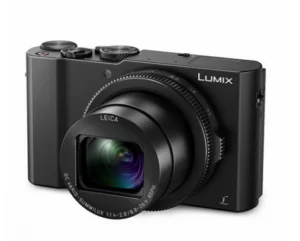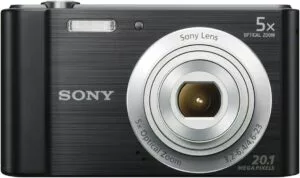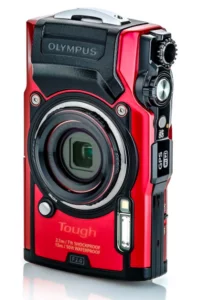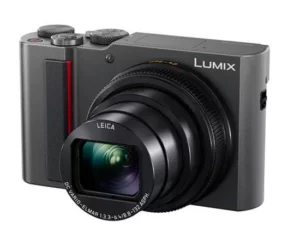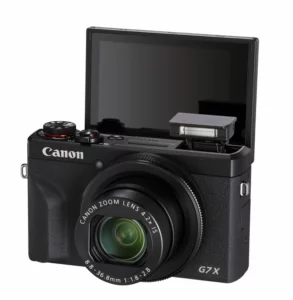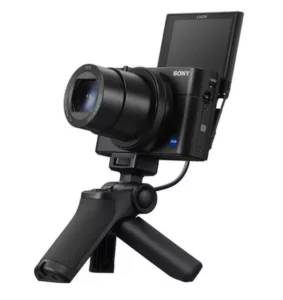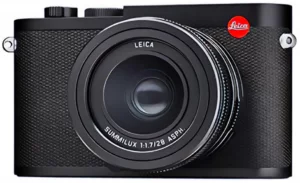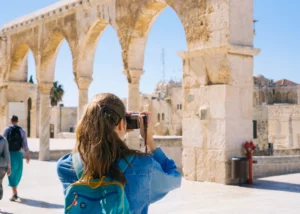
The Best Point-And-Shoot Cameras in Canada
Disclaimer: Since we wanted to make the shopping experience as convenient as possible, we only tried to add Canada-based retailers. Hence, some of the point-and-shoot cameras are sold gently used, while others might remain out of stock (speaking of smaller retailers). If you experience any technical difficulty with provided products, please do not hesitate to let us know, and we will do our best to fix it.
While your smartphone is capable of taking fairly sharp photographs of your kids, vacation and memorable moments, when zoomed in, and tried to print as a poster, you might notice blurry pixels. That is when a point-and-shoot camera becomes a worthy upgrade by offering more zoom power, a larger sensor and overall higher image quality. Digital point-and-shoot cameras are no longer a prime choice for proud parents (who wish to capture their kids participating in sport events) only, but also for professional photographers who are looking for a second, pocket-sized camera.
The camera’s compact size and a lighter body, compared to DSLRs, is not only useful while travelling, but also when attending parties, or special occasions such as weddings and graduation ceremonies. Point-and-shoot cameras are slightly bigger than smartphones but can be as easily carried in a pocket or a small purse.
Another advantage of point-and-shoot cameras is the low price point. More affordable than DSLRs and mirror-less cameras, those cameras are ideal for anyone who starts their journey in photography and does not plan to spend thousands of dollars while taking pictures remains just a hobby.
Surely, point-and-shoot cameras cannot offer the same quality of images as DSLRs. However, with such features as a long optical zoom range, built-in flash, higher image and video quality, acceptable low-light performance and image stabilization in some models, you can easily create quality content for both social media and family photo albums.
Of course, another factor that makes those cameras far more advanced than smartphones is the production of detailed, crisp videos with 4K recording capability.
Point-and shoot sensors, that are larger than smartphones’, promise a much more improved picture quality, especially when you are shooting indoors or in a low-light setting. Moreover, point-and-shoot cameras have a built-in fast focus that is more suitable when capturing running kids or pets, and sports events.
To make it easier for you to find out which camera would meet your photographic ambitions, we prepared a list of the best point-and-shoot cameras on the market.
Why Trust Us
Although we do not test every product we suggest, we are committed to completing thorough research. Before we finalized the list of the best point-and-shoot cameras in Canada, we triple-checked each product based on the following factors.
First, we found out what other buying guides, especially those that specialize in electronics (PC Mag, Digital Camera World, Wirecutter), had to say.
Second, we analyzed customers’ reviews of each product. Every point-and-shoot camera you find in this guide was approved by hundreds of enthusiasts and professional photographers.
Third, we only added cameras that earned at least four stars on Amazon, Walmart and other retailers.
How to choose a point-and-shot camera
Wide-aperture lens
Shortly put, the wider aperture, the better. A wide aperture takes in more light making shooting at a lower ISO easier, which in the end reduces noise and blur. Moreover, a wide aperture allows you to create portraits with a more pronounced blur behind a person or a pet, (bokeh effect).
Large sensor
The same principle applies here—for better quality images look for a camera with a large sensor. Cameras with large sensors reduce image noise and easily capture both bright and dark areas. Look for a point-and-shoot camera with at least a 1-inch or larger sensor.
Wireless connection
Times when the only way to download your photos from the camera was through putting an SD card in a reader on a computer and emailing images to your account, are long ago gone. While it is still one of the ways, newer cameras offer the convenience of connecting to your phone via Wi-Fi, Bluetooth or NFC. Keep in mind that to connect designated apps to a point-and-shoot camera you would have to spend some time setting up the bridge between the two devices.
Design
Most point-and-shoot cameras are compact and lightweight. Look for a camera that is designed to fit in a pocket or a small purse. In that case, you will be able to carry it anywhere you go and capture all those memorable moments.
Video quality
If you are planning to record videos, start a YouTube channel, or become a vlogger, high-quality sensors and lenses are a must. Look for a camera that records videos at 1080p resolution and 60 frames per second. Additionally, you want to select a point-and-shoot camera that records at 4K resolution.
Additional features
Features that are not necessary, but convenient to have, are touchscreen, electronic viewfinder and tilt screen. Touchscreen makes navigating the menu and focus easier, while the tilt screen allows you to shoot below and above your head. The electronic viewfinder makes it easier to shoot on bright sunny days without the uncomfortable glare on the display.
The Best Point-And-Shoot Camera Overall
Panasonic Lumix DMC-LX10
Besides an intuitive touchscreen interface and 4K video streaming, Panasonic Lumix DMC-LX10 also offers a screen flip of 180 degrees for taking selfies and high-resolution images
While image or video quality is the most important factor in any content creation (or even family photo albums), this camera produces crisp JPEG pictures with natural light and without oversaturated colours. Panasonic Lumix DMC-LX10 is also optically stabilized which makes every image clear and sharp, especially when shooting at slow shutter speeds.
Panasonic Lumix DMC-LX10 comes with a Leica-branded lens that is suitable even for macro images, focusing down to three centimeters. Overall, the lens covers around 24-72 millimeters (about 2.83 in) range which is much wider than smartphone cameras, and is suitable for both portraits and landscapes alike.
Pros
- Intuitive touchscreen.
- 4K video streaming.
- Leica-branded lens.
- Optical stabilizer.
Cons
- No electronic viewfinder.
The Best Small Point-And-Shoot Camera
Sony Cyber-shot DSC-W800
“A great little camera,” says a satisfied reviewer. It takes great pictures and films, she continues. Plus, for a total novice it was so easy to use. Also, it is compact and fits in a pocket so she can carry it anywhere and everywhere for those things that memories are made of.
The Sony Cyber-shot DSC-W800 captures images with a sense of strong colour and detailing, even when shooting in bright light. Keep in mind that shooting in darker rooms without flash might end up as dull grainy images.
The lens offers 5x zoom which is enough to capture an object at a distance, shooting 20.1-megapixel images, and 2.7-inch display that is easy to navigate. However, based on some reviews, it is hard to see the display in direct sunlight.
But, despite a few minor flaws, this budget-friendly camera is a worthy upgrade from a smartphone camera.
Pros
- Budget-friendly.
- Compact size.
- 5x zoom.
Cons
- Glared display in direct sunlight.
The Best Waterproof Point-And-Shoot Camera
Olympus Stylus Tough TG-6
If you are planning underwater excursions, the best point-and-shoot camera for capturing the marvelous marine world is Olympus Tough TG-6. It features a 12 MP sensor, TruPic VIII image processor, and 4X optical zoom. The Tough line also means a durable, water-resistant (up to fifty feet), and shock-resistant (up to seven feet) frame.
As one user noted, he had a DSLR, which did not play nice on kayak trips on several levels. He bought Olympus Tough TG-6 as a go-anywhere-do-anything camera, and to his surprise, the camera was exactly what he needed. “It gives me some of the features of my DSLR, and most of the time I am able to get what I want.”
Other reviewers note that Olympus Tough TG-6 gives them the ability to create bokeh effect, hence use the camera for portraits. Whoever is shooting landscapes also agree that while the lens is a no “birdwatching” type, it still allows you to capture the beauty of cities and nature.
One of those reviewers noted that she had a chance to play with the fisheye adapter and it gave her just a slightly wider angle overall. This camera is amazing for macro photography, though: all pictures turn out stunning, she added.
Pros
- Easy to navigate menu.
- Ideal for micro still photography.
- Slow motion videos in HD resolution.
Cons
- Not the best performance in low-light settings.
The Best Zoom Point-And-Shoot Camera
Panasonic Lumix ZS200
Panasonic Lumix ZS200 is a beginner-level point-and-shoot camera that is packed with functional features. The camera’s 1-inch sensor offers a resolution of 20.1 MP which is responsible for a high-quality picture from vacation or special events that you could easily print later.
Speaking of vacation, one of the reviewers noted that he purchased Panasonic Lumix ZS200 as a travel camera for it is compact enough to take in your bag daily. “Compact, but satisfyingly heavy.” He continues that camera offers a good intelligent autofocus and image stabilization.
The ZS200 also allows you to take control over the aperture mode for a bokeh effect when shooting portraits.
Another feature that many travelers admire about this camera, is a lens with 15x magnification. For such a compact camera it is impressive optical zoom that keeps quality high even when zooming in.
For those who are planning to shoot videos whether for home use or YouTube, the Panasonic Lumix ZS200 comes with a 4K video recording function with a full multimedia setup. (Switch easily between shooting stills and videos.)
Pros
- 4K video recording.
- 15x magnification lens.
- Ideal for beginners.
- Suitable for both portraits and landscape.
Cons
- Narrower aperture than other point-and-shoot cameras.
The Best Point-And-Shoot Camera with Touchscreen
Canon PowerShot G7X Mark III
Reasonably priced, and with various features to play around, Canon PowerShot G7XMark III is another point-and-shoot camera. The camera offers outstanding low-light capabilities and an ISO range of 125 to 12,800. Besides, it is one of those models we wanted to include because of burst mode with a continuous shooting speed of 20 fps which is more than enough to capture sports events.
Canon PowerShot G7XMark III comes with a 1-inch CMOS sensor and 20.1 MP sensor resolution which delivers crisp and quality image results.
Meanwhile, tilting electronic viewfinder and LCD touchscreen provide the convenience of taking photos at awkward angles, below or above your head.
Although the zoom range is not as impressive as on the previously mentioned Panasonic Lumix ZS200, the 4.2x is suitable for most types of recording, and the image stabilizer turns your videos into professionally shot content.
Pros
- Great low-light shooting capabilities.
- High ISO range.
- Burst mode of 20 fps.
- Touchscreen.
Cons
- As per some reviews, the camera overheats easily and shuts down to cool off.
The Best Point-And-Shoot Camera for Shooting Spots
Sony Cyber-Shot RX100VA
The Sony Cyber-Shot RX100VA is what both enthusiasts and professional photographers choose as their point-and-shoot camera. Photos turn out stunning, and although the price is fairly high, the owners of the camera say it is worth the cost.
Cyber-Shot RX100VA offers a continuous shooting speed of 24 fps and impressive autofocus when shooting in burst mode. Easily capture running kids and pets or spot evens without compromising on quality. (Another one is a 20.1 MP sensor and impressive performance in low-light settings.)
One more convenient feature is the 4K video resolution. The Sony Cyber-Shot RX100VA is a worthy upgrade from a smartphone whether you are filming for YouTube or home entertainment.
Pros
- Impressive autofocus when shooting in burst mode.
- 4K video resolution.
- Impressive performance in low-light settings.
Cons
- Not designed to use in adverse conditions.
The Best Point-And-Shoot Camera for Still Photography
Leica Q2
Leica Q2 is the most expensive point-and-shoot camera on our list, yet its outstanding quality and features make it worth the cost. The first one is a full-frame sensor (bigger than APS-C sensors), and image resolution of 47 MP. What sells those cameras is not only the reliability of the brand name, but also the images captured by it.
A reviewer who had a month or so with Q2 and was very pleased with it, noted that the camera is a joy to use. The lens is superb, the sensor has plenty of resolution to spare and she loves how the camera melts away in her hand, allowing her to focus on photography. The menu system is very intuitive, and everything is exactly where it needs to be and easy to navigate, she concluded.
Other than that, Leica Q2, which is an ideal choice for still photography, is not recommended for videography (only offers 1080p) or burst photography (comes with 10 fps).
Pros
- Ideal for professional photography.
- Image resolution of 47 MP.
- Outstanding quality of the frame and lens.
- Superb sensor.
Cons
- Expensive.
- Not ideal for video recording.
Questions and answers about point-and-shoot cameras
What is the most durable point-and-shoot camera?
Based on several reviews, among the best point-and-shoot cameras, the most durable camera is the Panasonic Lumix TZ200. The camera offers a one-inch sensor, 15x optical zoom and is built from durable aluminum. The ergonomic design features a comfortable grip and compact size that fits into a small purse or a pocket. Hence, the Panasonic Lumix TZ200 is a combination of a sturdy frame and body, and advanced settings for shooting anywhere you go.
What is the difference between point-and-shoot and film cameras?
Basically, point-and-shoot cameras can do just what is expected of them: point and shoot. Meanwhile, film cameras, in order to take pictures, have to be loaded with rolls of film. Also, film cameras come with already preset focus, length and exposure, while with most point-and-shoot cameras you can choose settings and zoom in or zoom out (depending on a lens).
Is a point-and-shoot camera worth it?
Yes, a point-and-shoot camera is worth the price. Whether you are looking for a second, more compact device or want to upgrade the quality of your pictures, (compared to a smartphone camera). A point-and-shoot camera offers a compact design, better image quality and zoom capabilities. The camera is more affordable and lighter than DSLR models, which makes it easier to carry around when travelling.
Can you take professional photos with a point-and-shoot camera?
Many professional photographers choose point-and-shoot cameras as their second option because they are easily portable (unlike most DSLRs) and are ideal choices for quick snapshots.
Read more

The Best Video Cameras You Can Get in Canada
Vloggers, filmmakers and proud parents who capture every step of their firstborn baby or graduation walk. Find the best video cameras here.
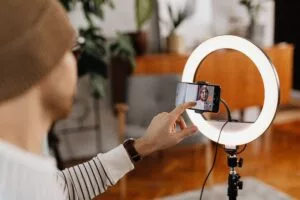
The Best Ring Lights in Canada
Improve your pictures and videos or simply brighten up your face during a Zoom call with a ring light.
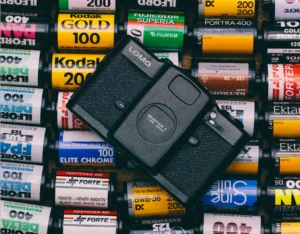
The Best Film Cameras in Canada
Besides aesthetically pleasing grainy pictures, shooting with a film camera teaches you how to be present.
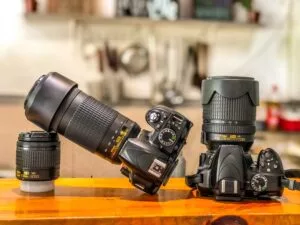
The Best DSLR Cameras in Canada
DSLR cameras let you capture stunning photographs of landscapes, people, wildlife, and many more things.
